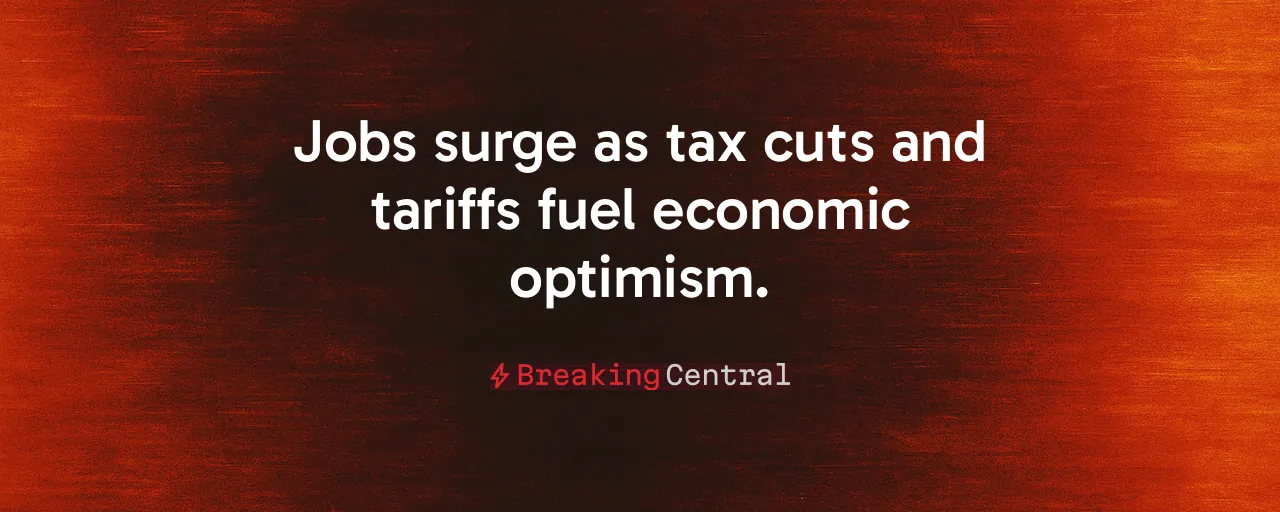A Surge in Jobs, A Spark of Optimism
The June 2025 Employment Situation Report was released, announcing 147,000 new jobs and an unemployment rate dipping to 4.1 percent. U.S. Secretary of Labor Lori Chavez-DeRemer hailed the numbers as proof of President Trump's economic vision taking root. Workers are seeing results, with wages climbing 3.7 percent over the past year. Beneath the headlines, questions linger about whether this momentum can hold.
This jobs report, surpassing expectations for the fourth consecutive month, signals a labor market that continues to show strength. From construction sites to office buildings, Americans are finding work. But the report also reveals cracks: manufacturing shed 7,000 jobs, and private-sector hiring softened. These mixed signals set the stage for a deeper look at the policies driving this moment.
At the heart of the discussion is the administration's bold agenda, particularly the proposed 'One Big Beautiful Bill.' This legislation promises historic tax cuts, an end to federal taxes on overtime pay, and relief for small businesses. For workers and employers, the prospect of more take-home pay and lower costs is a beacon of hope in an economy still scarred by past trade deals and regulatory burdens.
Tax Cuts to Unleash Opportunity
The cornerstone of the administration's plan is a sweeping tax overhaul designed to put more money in workers' pockets. By slashing taxes and eliminating levies on overtime pay, the bill aims to reward hard work and fuel spending. Small businesses, often the backbone of local economies, stand to gain from reduced costs, allowing them to hire and expand.
Historical data backs the potential of tax relief. During President Trump's first term, the 2017 Tax Cuts and Jobs Act spurred business investment and job creation, with unemployment dropping to 3.5 percent by 2019. Today's proposal builds on that legacy, targeting middle-class families and small enterprises. Economists note that June's wage growth, outpacing inflation, could amplify if tax cuts boost consumer demand.
Challenges loom. Independent analyses warn that large tax cuts could widen federal deficits, especially if paired with reduced revenue from overtime exemptions. Policymakers aim to balance fiscal responsibility with economic stimulus to avoid overheating an already tight labor market.
Tariffs and Borders Reshape the Workforce
Beyond taxes, the administration's trade and immigration policies are reshaping the labor landscape. Tariffs on foreign goods aim to bring manufacturing back to American soil, protecting jobs in industries battered by decades of outsourcing. June's job gains, while strong, mask losses in manufacturing, suggesting tariffs' benefits may take time to materialize.
Immigration restrictions, another pillar of the agenda, have tightened the labor supply, contributing to wage growth. Studies link reduced inflows of workers to higher pay in low-wage sectors like construction and hospitality. However, critics point to labor shortages in agriculture and caregiving, where fewer workers could drive up costs for consumers.
The interplay of these policies creates a complex picture. Tariffs may shield some jobs but raise prices for households, hitting lower-income families hardest. Immigration curbs bolster wages but strain industries reliant on flexible labor. Policymakers are navigating these trade-offs to ensure broad-based prosperity.
Lessons From the Past, Eyes on the Future
Looking back, the administration's focus on domestic production echoes earlier efforts. In 2018, tariffs on steel and aluminum spurred some factory hiring, though higher input costs squeezed other sectors. Today's broader tariff strategy aims to avoid those pitfalls by pairing trade protections with tax incentives, encouraging businesses to invest in American workers.
The labor market's resilience, with 130,000 jobs added monthly in 2025, reflects a recovery grounded in policy shifts. Historical cycles, like the 2004-05 post-recovery slowdown, remind us that growth can falter without sustained investment. Workforce training and infrastructure upgrades will be critical to turning tariff-driven reshoring into lasting opportunity.
Guarding the Gains, Facing the Risks
The current economic surge offers a window to solidify gains for workers and businesses. The proposed tax bill, with its focus on overtime pay and small-business relief, could cement the labor market's strength. Rising wages and low unemployment reflect a system rewarding effort, but vulnerabilities remain.
Manufacturing's decline and falling labor-force participation, now at 62.3 percent, signal underlying weaknesses. The Federal Reserve's high interest rates, intended to curb inflation, risk stifling growth if left unchecked. Advocates for the administration's agenda urge the Fed to ease rates, arguing that monetary policy benefits from alignment with fiscal and trade efforts.
For workers, the promise of tax-free overtime and lower business costs is tangible. The path forward hinges on execution. Reshoring requires time and investment, and tax cuts require careful structuring to avoid ballooning deficits. The administration's vision is bold, but its success depends on precision and adaptability.
A Vision for Workers' Prosperity
The June jobs report and the policies behind it paint a picture of an economy at a crossroads. Workers are reaping the rewards of higher wages and new opportunities, driven by a government prioritizing American labor. The proposed tax cuts and trade protections aim to lock in these gains, offering a vision of prosperity rooted in self-reliance.
The road ahead demands vigilance. Policymakers are tasked with addressing manufacturing's struggles and labor shortages while ensuring tax relief reaches those who need it most. By learning from past successes and avoiding overreach, the administration can build an economy that lifts every worker.
For now, the labor market's strength is a testament to policies that put American workers first. As the nation watches the next steps, the fight for economic opportunity continues, and the stakes remain high.
